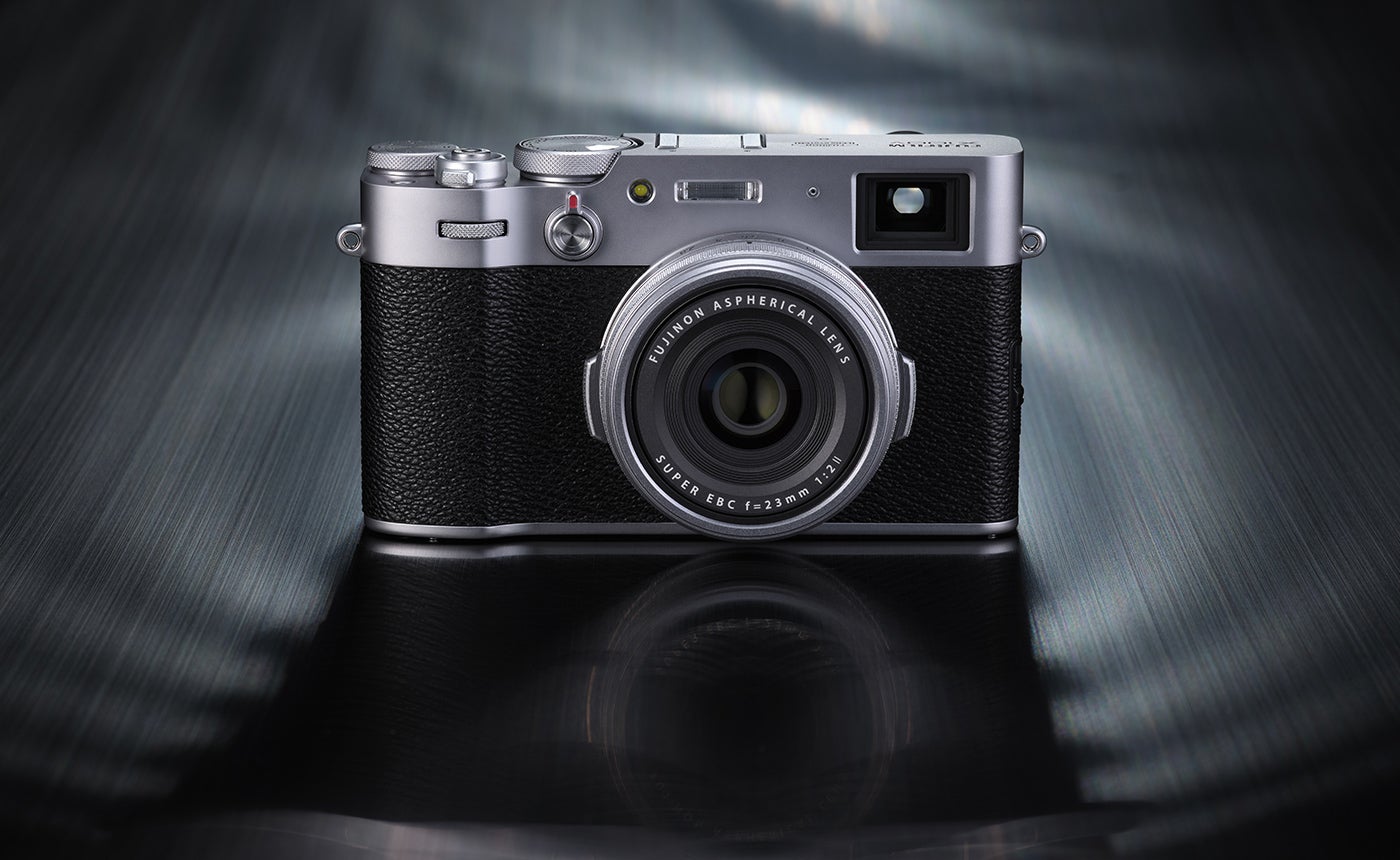Opinion: The joy of fixed-lens cameras
Here's why fixed-lens, big-sensor cameras like the Fujifilm X100V, Ricoh GR III, and Leica Q2 are better than any ILC.

We may earn revenue from the products available on this page and participate in affiliate programs. Learn more ›
I went out walking this morning, and I took my Leica Q2 Monochrom with me. Walking among the fields around my home in rural England is always interesting: the light changes often, the sky varies from hour to hour, and the crops in the fields show new tones as the seasons progress.
Since the Q2 is a fixed-lens camera, I didn’t need to decide which lens to take. I also own a Fujifilm X-E4, with a panoply of prime and zoom lenses, and when I shoot with that camera, choosing which lens or lenses will be ideal for the photos I plan to take can be complex. And my camera bag can end up quite heavy. With the Q2, there’s nothing additional to carry.
Less is more
There are a handful of high-quality fixed-lens cameras currently available, such as Fujifilm’s X100V, Ricoh’s GR III and GR IIIx, or Leica’s Q2 and Q2 Monochrom. With prices around $900 (Ricoh), $1,400 (Fujifilm), $5,600 (Leica Q2), and $6,200 (Q2 Monochrom), these are not inexpensive travel cameras, but very capable modern mirrorless devices. Many people see fixed-lens cameras as too limiting, that having only one lens can prevent them from taking diverse types of photos. But shooting with a fixed-lens camera can actually be liberating.

Limitations spur creativity
The limitation of a fixed lens can help spur creativity. When working with a camera like this, you become familiar with how photos shot through that lens will look. When you scan your surroundings searching for subjects to photograph, you automatically scale them with the camera’s lens in mind; you learn to see the world as that lens sees it. Instead of thinking that you might want to use a different lens or focal length for a photo, you work with this limitation. You can awaken your beginner’s mind, freeing yourself from technical concerns. As Zen teacher Shunryu Suzuki said, “In the beginner’s mind there are many possibilities, but in the expert’s there are few.”
A wide field-of-view
The cameras I’m discussing all have different focal lengths: the Ricoh GR IIIx has a 40mm equivalent lens (the GR III has a 28mm equivalent), the Fujifilm’s lens is a 35mm equivalent, and the Leica has a 28mm lens. All of these focal lengths are considered wide-angle (Ok, 40mm straddles the line between wide-angle and “standard”), and if this isn’t your style of photography, they won’t work for you. Wildlife, sports, or macro photography require different lenses (though the Leica Q2 does have a macro focus mode). But for street photography, landscapes, and documenting family life, these focal lengths can be fantastic.
Cropping in-camera

Because of these wide-angle lenses, you may have to “zoom with your feet,” and, while you can’t always get as close as you want to your subjects, you can crop. These cameras all have modern sensors that have excellent dynamic range and enough megapixels for most photographers: the Ricoh has a 24-megapixel APS-C sensor, the Fujifilm has a 26-megapixel APS-C sensor, and the Leica has a 47-megapixel full-frame sensor, both for the color and monochrome models.
All of these cameras offer digital zoom features, which allow you to crop live, viewing different “virtual” focal lengths in the viewfinder or LCD. On the Fujifilm X100V, you have crops at 50mm and 70mm equivalents, and the Leica Q2 crops to 35mm, 50mm, and 75mm equivalents. The GR III crops at 35mm and 70mm equivalents and the GR IIIx crops at 50mm and 70mm equivalents. These features are compositional assistants, and if you shoot raw, you still retain the full images the lenses capture, but it can help to use these guides to compose photos that you might later crop.

Lenses built for their sensors
Another advantage of a fixed-lens camera is that the lens is designed specifically for the camera, not just for a manufacturer’s camera mount. It can sit closer to the sensor, saving a lot of space, and allowing the lenses to be optimized for the sensor. Both the Ricoh and Fujifilm cameras are incredibly compact for their quality; the former easily fits in a jacket pocket. The GR III X has an f/2.8 lens, and the X100V has an f/2 lens; not the fastest, but certainly not slow. The Leica Q2 series is more substantial: its f/1.7 lens takes up a lot of space, and it’s much heavier; but it’s also the toughest-built camera of the bunch.
An end to G.A.S.
Also, if you use a fixed-lens camera, you won’t have the same gear acquisition syndrome that you have with other interchangeable lens cameras; there is always the temptation to buy just one more lens. Sure, there are accessories you can buy, such as cases, straps, grips, and thumb rests—and both the Ricoh and Fujifilm cameras offer “converters,” lenses you screw onto the camera to shoot in longer and wider focal lengths. But you won’t be constantly looking at newer, faster lenses and wondering if you really need them.

The wrap
Yes, there are limitations with a fixed-lens camera. And, as a photographer, you learn to work them. Ernst Haas once said, “There is only you and your camera. The limitations in your photography are in yourself, for what we see is what we are.”
Ultimately, we have to be comfortable with the camera we choose. A fixed-lens camera isn’t for everyone, and, particularly, with the cost of the Leica, many people will balk at buying a camera with just one focal length. But if your photography suits this type of camera, it’s worth considering ditching the ILC and using a fixed-lens camera instead.
